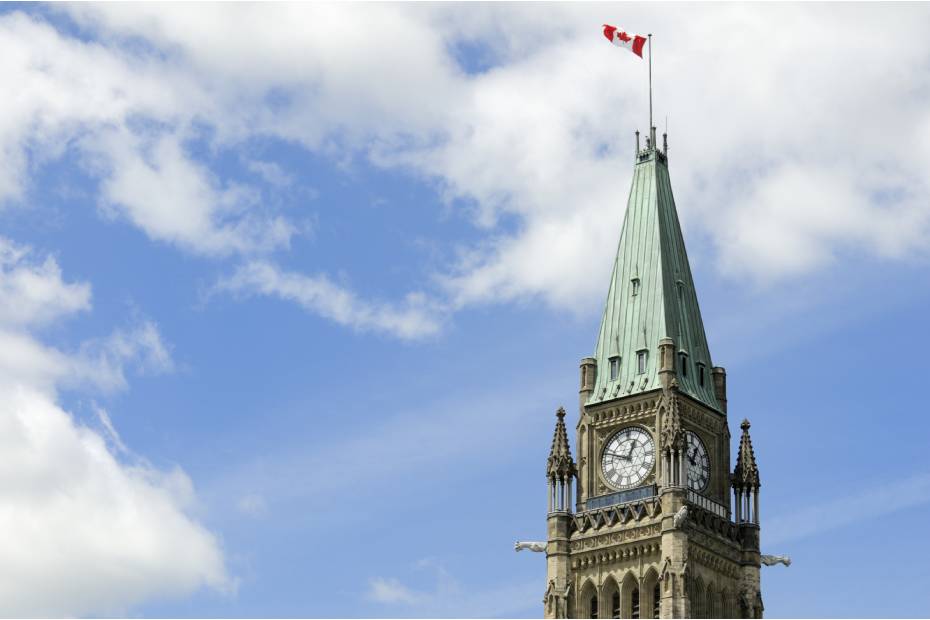Published March 30, 2023 • 5 Min Read
This report was first published by RBC Global Asset Management on March 28, 2023 under the title Federal Budget 2023.
As the economy continues to adjust to high levels of inflation, considerably higher interest rates, and the impacts these are set to have on growth, the Canadian government has introduced a budget focused on clean energy initiatives, affordability measures, and already-announced health care spending. Fiscal discipline is in short supply, with larger budget deficits projected in each of the coming five years relative to the Fall Update.
The 2023 fiscal plan now projects increased spending and reduced revenues that will result in a deficit of $40.1 billion for the 2023/2024 year, about $10 billion more than the figures released in the fall. This demonstrates that fiscal finances continue to take a back seat to expansive spending measures. In turn, the NDP is likely to provide support to the minority Liberal government. Despite major new spending initiatives worth $30 billion over the next five years, the announced budget largely fails to address the longer-term structural issues that weigh on Canadian economic growth.
New spending initiatives include:
-
There will be $198.3 billion in promised spending over the next 10 years to build on the public health system, in significant part via transfers to provinces, as announced last month. This includes $13 billion in funding for Canadian Dental Care Plan that targets the uninsured and low to middle income Canadians.
-
Additional targeted spending in clean energy projects and infrastructure. This is partly in response to similar new initiatives announced by the U.S., ensuring that Canadian companies in the sector will be able to compete. The measures include tax credits worth up to 50% of the value of spending, totaling about $20.9 billion over the next five years. Other green initiatives include targeted investments through the Canadian Infrastructure Bank and additional support for carbon capture and storage initiatives. Canada’s carbon tax will again rise on April 1 by $15 per tonne of carbon, as part of a scheduled annual process extending through 2030.
-
A new $2.5 billion grocery rebate for lower-income Canadians aims to deliver targeted funds to dampen inflation’s impact on essential goods. Conversely, the military attracted relatively little new funding despite the intensification of the war in Ukraine and tensions with China.
Spending cuts and revenue generation:
To offset some of these planned expenditures, the budget introduced plans to reduce spending on consulting, travel and other services, leading to savings of $7.1 billion over the next five years. It also plans to reduce the eligible budgets of government departments and Crown corporations by $8.3 billion. In addition, $6.4 billion of previously announced funding that remains unallocated will be eliminated or delayed.
The budget also introduced several sources of new revenue to help offset some of the additional spending measures.
-
Changes will be made to the alternative minimum tax for the highest-income Canadians, instituting a floor that moves the minimum tax from 15% to 20.5%. This effectively limits the extent to which the aggressive use of deductions can reduce one’s tax rate. The basic exemption on the alternative minimum tax rises from $40,000 to $173,000, meaning that only higher income Canadians will be affected. This change is expected to bring in additional revenue of $3 billion over the next five years.
-
The previously announced 2% tax on share buybacks will now be implemented, applying to any businesses with share repurchases in excess of $1 million per year. This is expected to contribute $2.5 billion in revenue over the next five years.
-
In addition, dividends paid to financial institutions (but not issued by them) will also now be taxed as ordinary income, which should increase federal revenues by $3.15 billion over five years.
Other notable measures include:
-
A proposed increase in the RESP withdrawal limit from $5000 to $8000 for full-time students during their first 13 weeks of enrolment, and from $2500 to $4000 for part-time students.
-
Automatic tax filing for low-income Canadians in order to make them automatically eligible for government services and programs.
Economic implications and considerations
The proposed new spending will cost an additional $30 billion over five years, which amounts to a significant 1.5% of GDP. The size of the government has grown substantially relative to the pre-pandemic period. Simultaneously, debt-servicing costs are set to increase in the future, and revenues are expected to grow less quickly due to weaker economic growth assumptions.
In addition, the budget document has removed the $8.5 billion contingency fund, meaning there is no longer a large buffer against downside surprises in the figures.
The federal debt is projected to increase over the coming year to 43.5% of GDP, and then shrink back to 39.9% of GDP by 2027-2028. This is a slower decline than previously forecast.
Despite the Liberal government’s minority status, this budget should easily pass given the party’s confidence agreement with the NDP.
Find more from RBC Global Asset Management at www.rbcgam.com.
The material in this article is intended as a general source of information only, and should not be construed as offering specific tax, legal, financial or investment advice. Every effort has been made to ensure that the material is correct at time of publication, but we cannot guarantee its accuracy or completeness. Interest rates, market conditions, tax rulings and other investment factors are subject to rapid change. You should consult with your tax advisor, accountant and/or legal advisor before taking any action based upon the information contained in this article.
This article is intended as general information only and is not to be relied upon as constituting legal, financial or other professional advice. A professional advisor should be consulted regarding your specific situation. Information presented is believed to be factual and up-to-date but we do not guarantee its accuracy and it should not be regarded as a complete analysis of the subjects discussed. All expressions of opinion reflect the judgment of the authors as of the date of publication and are subject to change. No endorsement of any third parties or their advice, opinions, information, products or services is expressly given or implied by Royal Bank of Canada or any of its affiliates.
Share This Article






